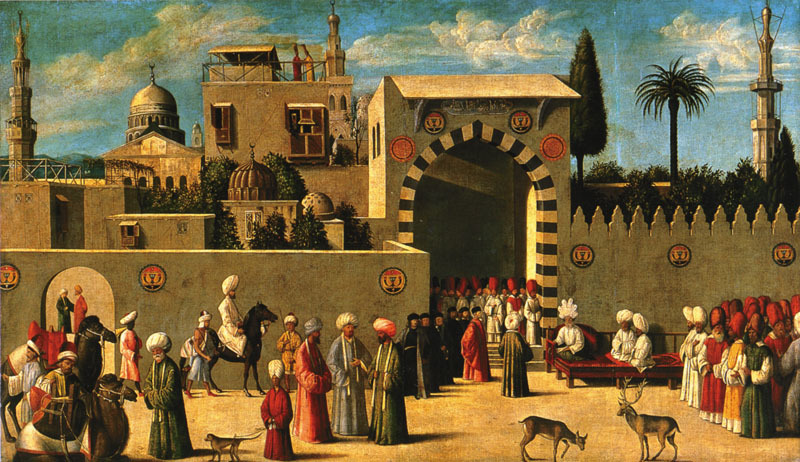Venice and Islam: 828–1797
Gazing up at the walls of the Sala dello Scrutinio in the Doge’s Palace, at the enormous canvases depicting tumultuous scenes of colliding fleets, flashing armour and swords, flying arrows, broken spars, burning and sinking ships, and waters congested with enemy dead and dying, you could be forgiven for thinking that Venetian history was one long sea-battle, with the Serenissima fighting almost single-handed to stem the Islamic tide.
And for that reason this lofty hall is a perfect setting for this exhibition, because so much of what we see in the paintings, art and artefacts on view at floor level (and in the art and architecture throughout the rest of the city) contradicts this image of permanent conflict and the irreconcilable clash of civilisations.
The year 828 is the traditional date given for when two Venetian merchants smuggled the remains of St Mark out of Alexandria and to Venice. At this early time the presence of the Venetians in the Levant was negligible, but in the succeeding centuries they saw off their rivals and established a virtual monopoly on the trade in key commodities between the eastern Mediterranean and the West. Wars with Islamic states occurred, but there were long periods of peace and the flow of trade was seldom seriously disrupted.
As the commerce expanded, Venetian merchants spent extended periods of residence in eastern ports and travelling in the interior. They often adopted local dress and learnt local languages. Venetian dialect became peppered with words of Greek, Arabic and Turkish origin. Many Venetian words, especially but not only maritime and mercantile terms, were absorbed by these languages in turn.
Venice itself underwent a process of orientalisation unparalleled in any other Western city, as this display of more than 150 paintings, prints, carpets, textiles, glass, ceramics, metalwork, carvings, leatherwork and books sumptuously reveals.








Comments
Join the debate for just £1 a month
Be part of the conversation with other Spectator readers by getting your first three months for £3.
UNLOCK ACCESS Just £1 a monthAlready a subscriber? Log in